The Essence of Iconic Japanese Warriors in Samurai Photography
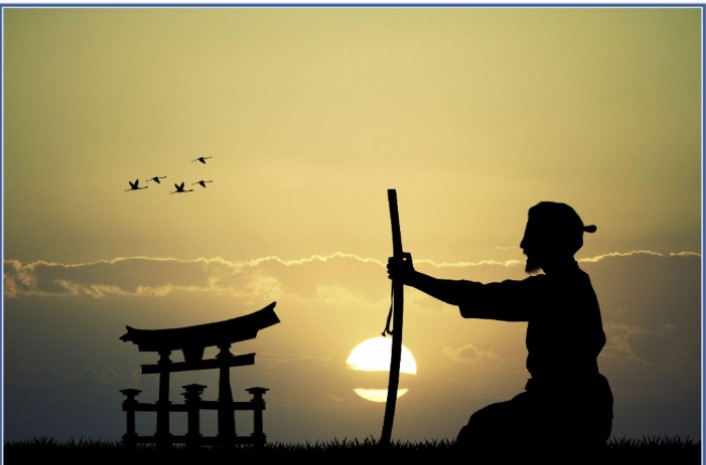
Exploring Samurai Tradition Through Photography
As timeless symbols of Japan’s rich history and culture, samurai have been a subject of fascination for many. From long-standing paintings to modern pop culture, pictures of iconic Japanese warriors continue to captivate audiences around the world.
Following the obsession, this article focuses on the exploration of samurai tradition through photography. Along with samurai pictures by Depositphotos, you’ll discover the fascinating history of samurai warriors created over centuries. Read on to learn more!

Origins of the samurai
The origin of the samurai can be traced back to the Heian period in Japan, around the 8th century. They evolved from provincial warriors known as bushi. During this era, Japan was decentralized, with powerful regional clans competing for supremacy. These clans hired warriors to protect their land and interests, as well as enforce their authority.
The transformation of bushi into the elite class of samurai began with the rise of the Minamoto and Taira, two of the most powerful landowning clans. Their conflicts culminated in the Genpei War and led to the fall of the Taira. After that, the Kamakura shogunate (feudal military government) under Minamoto no Yoritomo was established, solidifying the samurai’s role as the ruling military class.
Kamakura shogunate
For most of the next 700 years, samurai dominated Japanese society, serving as the backbone of the nation’s military and political structure. In the 13th century, samurai repelled two Mongol attacks, once again proving their importance for internal order.
Muromachi era
The samurai reached their pinnacle of authority during the Muromachi era. In the 15th and 16th centuries, Japan split into dozens of separate states that were always at war with each other. Therefore, iconic warriors were in high demand.
Tokugawa shogunate
Things became better in the 19th century when Japan entered a period of peace and stability under the rule of the Tokugawa shogunate. Following this period of peace, the role of the samurai began to shift from warriors to administrators, bureaucrats, teachers, and artists. Japan’s feudal period ended in 1868, and the samurai class was disbanded shortly after.
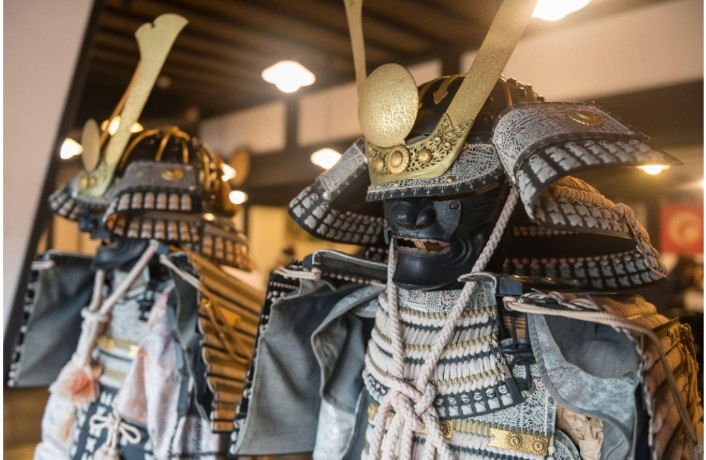
Samurai values and code of ethics
The samurai were guided by a code of ethics known as bushido, which shaped their values, behavior, and way of life. Samurai warriors lived their lives according to eight bushido rules. However, central to bushido were concepts of loyalty, honor, courage, and self-discipline.
Loyalty
Loyalty, or chūgi, was paramount for the samurai. They swore to always obey their lords and masters. This loyalty extended beyond death, with samurai often willing to sacrifice their lives to fulfill their duties.
Honor
Honor, or meiyo, was another fundamental principle that emphasized the importance of preserving a warrior’s integrity and reputation at all costs. Samurai had to act accordingly not only on the battlefield, but also in everyday life.
Courage
The art of the samurai also included courage or yūki. Samurai valued heroic courage and believed that a life spent hiding was not worth living. A true warrior faces all challenges with intelligence and strength, not fearing death.
Self-discipline
Self-discipline, or jisei, was yet another key aspect of the samurai code. Japanese warriors had to maintain strict emotional, mental, and physical discipline. Although they followed a rigorous training routine to constantly improve their skills, samurai must exercise restraint, understand their physical strength, and never abuse it.
In general, bushido provided a moral framework that guided samurai behavior and defined their identity as warriors. It was aimed not only at martial prowess, but also at spiritual and moral development. As a result, samurai were not just skilled fighters, but also noble and honorable people.
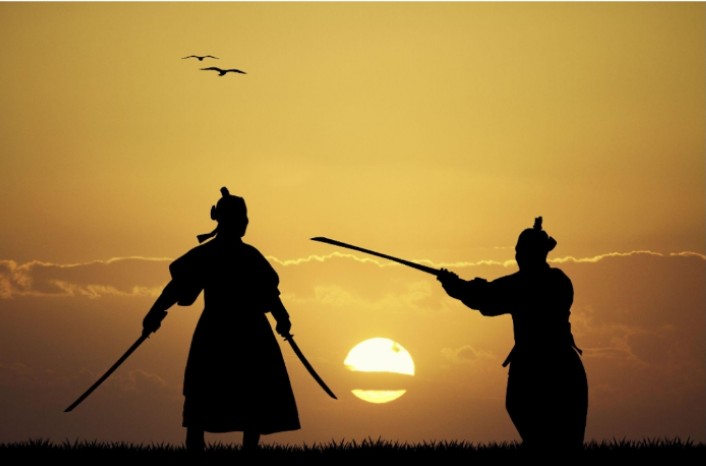
Legendary samurai swords: katana, wakizashi, and other arms
Central to samurai identity was kenjutsu, known as the art of the Japanese sword. Passed down from generation to generation, the techniques of kenjutsu were closely guarded secrets among the samurai class.
Katana
Katana was the most iconic and revered of all samurai swords. Its curved blade and exceptional craftsmanship set it apart from other swords. To make iconic Japanese blades, a blacksmith must possess not only physical strength, but also patience, dexterity, and a keen eye for the material’s limits.
Wakizashi
The wakizashi is a shorter sword often worn alongside the katana. It was used for close-quarters combat and seppuku, the ritual suicide of samurai. Together, the katana and wakizashi form the daisho, representing the social status and honor of the samurai.
Other arms
Samurai didn’t just use swords; they also wielded many other arms. These include the tanto (a short dagger), yari (spear), naginata (polearm), and bow and arrow. Each weapon served a specific purpose on the battlefield, reflecting the diverse tactics and martial skills of the samurai.
However, samurai armor provided more than just physical protection. It also symbolized their status and identity. Adorned with clan symbols and motifs, armor reflected the samurai’s lineage and loyalty.
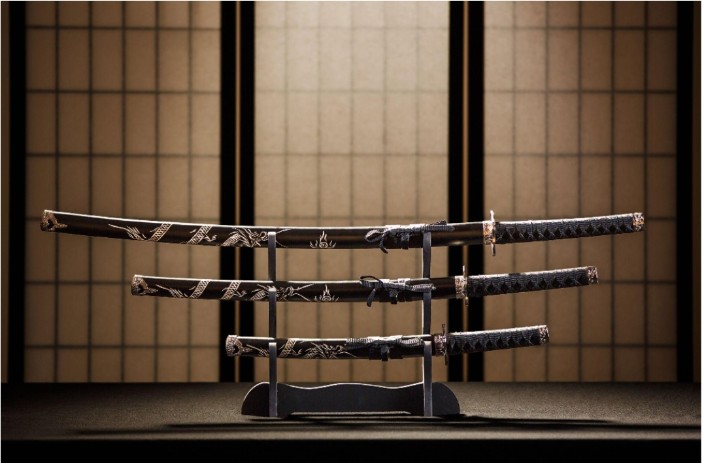
Symbolism and strength in images of samurai
The samurai’s weapons and attire held profound symbolism, reflecting their social status, martial prowess, and spiritual beliefs. Therefore, images of samurai with different weapons and in different clothes could represent the status and personal honor of the samurai.
Weapons
The katana symbolized the samurai’s honor, discipline, and readiness for battle. Paired with the wakizashi, it formed the daisho, representing the samurai’s authority and commitment to duty.
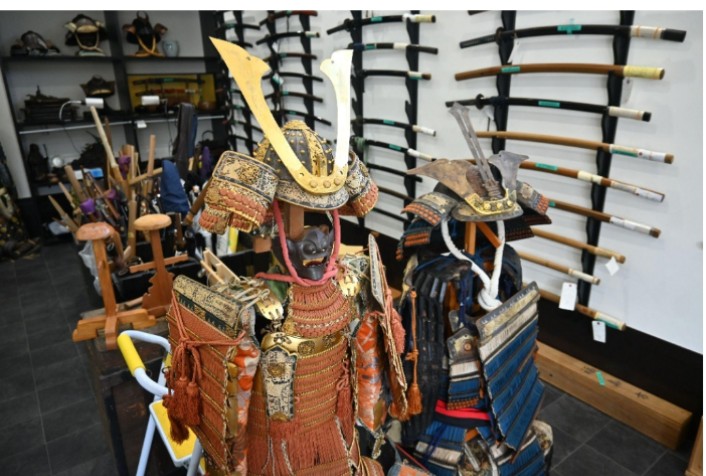
Armor
Samurai armor adorned with clan symbols conveyed lineage and allegiance. The helmet, or kabuto, often featured elaborate crests and designs, signifying the wearer’s status and identity on the battlefield.
Attire
On top of that, the colors and materials of samurai attire conveyed messages of rank and affiliation. Samurai of the highest rank wore kimonos with intricate ornaments made of luxurious silk. Lower-ranking samurai wore simpler cotton or linen clothing.
The colors of the kimono also mattered. Brighter colors such as red and gold were reserved for high-ranking officials. Lower-ranking samurai wore more muted tones, such as black or navy blue.
The influence of the samurai on literature, visual arts, and pop culture
Samurai art had a great influence on people’s artistic expression around the world. As a result, you can encounter samurai across various mediums. From literature, poetry, and theater to paintings, anime, movies, and even video games, the samurai theme captivates audiences.

In literature, the samurai have been romanticized and mythologized in classic works such as “The Tale of the Heike” and “The Tale of Genji”. In digital art, samurai have been represented in video games like Mortal Combat (Kenshi Takahashi character) or Ghost of Tsushima. Samurai aesthetics can also be found in Japanese manga series like “Rurouni Kenshin” and “Vagabond”.
Summing up
Understanding and preserving the rich tradition of samurai is crucial to honoring the history and culture of Japan. Plus, the lessons learned from samurai can be applied to modern life, teaching us the importance of honesty, perseverance, and self-discipline. Preserving the tradition will help future generations draw inspiration and wisdom from the teachings of this iconic warrior class.



